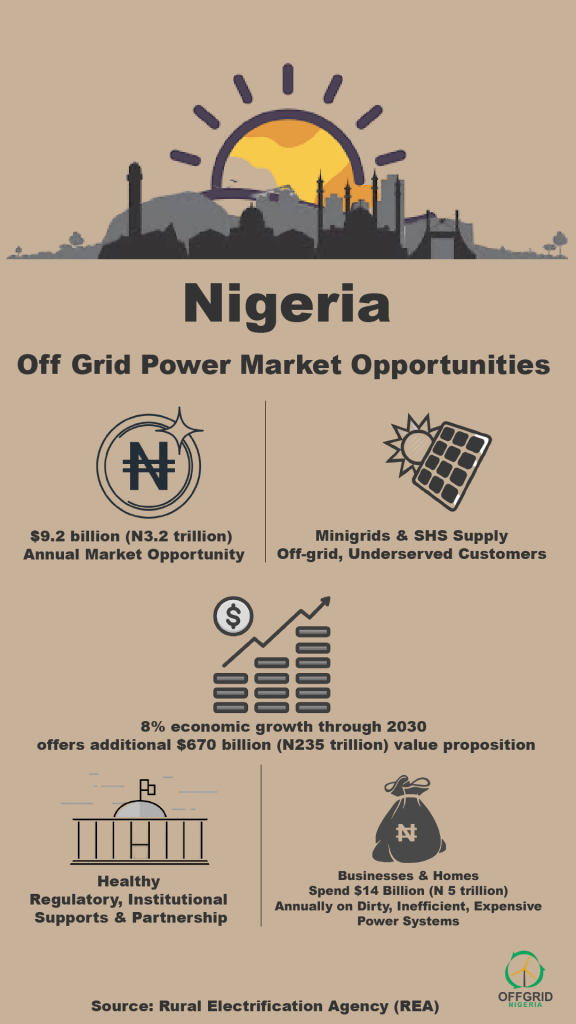Solving Nigeria’s electricity conundrum requires out-of-the-box thinking, which is what the marriage of energy efficient policies and renewable energy offers.
Globally, the relationship between renewable energy and energy efficiency has become more intertwined and symbiotic, with many international organizations accepting how codependent these two concepts are.
It was a realization of this unique relationship that prompted the launch of the Renewable Energy and Energy Efficiency Partnership (REEEP) in 2002 by the government of the United Kingdom, the REEEP being a multi-organizational partnership with the goal to accelerate the deployment of renewable energy into the international market and scene.
So far, the successes and achievements of REEEP have shown to be the best illustrations for the synergy between renewable energy and energy efficiency.
Loosely described, energy efficiency is the judicious utilization of whatever electrical power a system generates. This means using energy saving bulbs to light homes and offices, mindfully turning off appliances when they are not in use and replacing outdated energy sapping devices with their more energy conservative counterparts.
On the other hand, renewable energy is as yet seen as the debutante to the energy scene, they hold the best potentials for efficiency in generation for by their very definition they draw power from inexhaustible sources without producing any of the harmful after-effects that other power generating sources are encumbered with.
We believe this ‘marriage’ between energy efficiency and renewable energy is one of convenience and some necessity, and this is largely due to the current erratic state of renewable energy generation.
Even though there has been tremendous success and improvement to the generating capabilities of renewable energy technologies, they still operate at less than 40 per cent efficiency. This means that for solar energy, the sun has to keep shining for power to be made and wind has to keep blowing for wind energy to work and even at those times when they are working, the solar and wind machines are not harnessing up to 40 per cent of the output the sun and winds are giving out.
These limitations though have caused renewable energy systems to rely on energy storage components such as batteries, to augment their performance. It has also predicated the need for more efficiency in not just generation, but distribution and use of the said energy, which means energy efficiency.
Back home in Nigeria, the urgent need for cheap and constant electricity has further welded these two practices together.
Just recently, Vice President, Yemi Osinbajo, declared the intention of the government to power a large portion of Nigeria’s electrically underserved using renewable energy, we believe this reinforces the need to not only adopt wider reaching policies for renewable energy, but also to better utilize the resources currently at her disposal more prudently, after all, this is why the National Energy Efficiency Building Code (BEEC), an energy efficiency tool for modern buildings, was recently passed into law to become mandatorily effective in two years.
At this moment, it is estimated that between 45 to 90 million Nigerians are unconnected to the national grid. Similarly, data from the Nigerian Association of Energy Economists (NAEE), indicated that 45 per cent of the country’s population is currently connected to the national grid, while just about 25 per cent of this population receives steady power supply.
To drive home this revelation, the Nigerian federal government in its Power Sector Recovery Program document, also stated that this situation costs the country about N7.4 trillion annually, and that the 11 electricity distribution companies (Discos) collectively have cash deficits that have hit N931 billion owed to the Nigerian Bulk Electricity Trading Plc (NBET).
In all, while it is clear to see that the path to constant power remains blocked from the view of traditional grid connection and generating options, it is also noteworthy to suggest that to solve Nigeria’s power problems, the most tenable options remains innovative and out-of-the-box thinking which is what energy efficient policies and the renewable energy market gives.
Energy in Nigeria remains at a standstill due to amongst other things, indecisive and ineffective policies adopted at the wrong time to suit the wrong needs, we therefore suggest that the overarching goal of merging renewable energy to energy efficiency is to quickly grow power generation and distribution, as well as manage its consumption effectively through a modernised energy sector.





